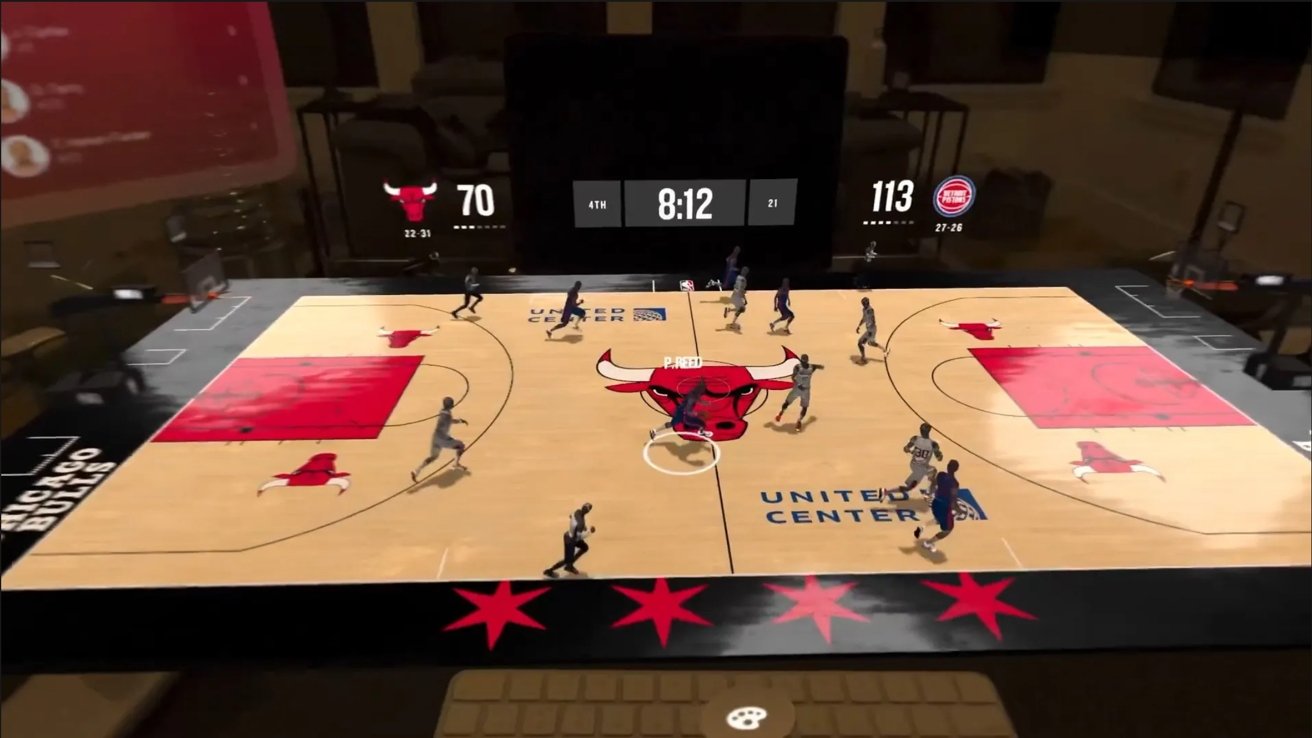The NBA’s 3D tabletop mode for Apple Vision Pro is an early glimpse at how mixed reality could reshape sports, concerts, museums, and education.
The update brings a 3D, diorama-style court to the NBA app, giving viewers a miniature, real-time look at the action alongside the standard 2D livestream. While the main broadcast stays the same, the added perspective makes the game feel more immersive.
Powered by motion capture technology from NBA arenas, the feature has a slight delay — around half a second — compared to the live feed, according to Upload.
For now, the tabletop view is only available for select games each night, but the NBA plans to roll it out for all League Pass games next season. Like other premium features in the app, it requires an NBA League Pass subscription, which starts at $15 per month.
What’s next for mixed reality?
Even for someone who isn’t really into sports, I think tabletop mode is pretty cool. It adds a new level of engagement that might appeal to people who wouldn’t usually watch an entire game.
The NBA’s approach opens the door for other sports to experiment with similar technology. Hockey could display a 3D rink with real-time player positioning, shot trajectories, and puck movement heatmaps.
Baseball could showcase pitch trajectories, defensive shifts, and exit velocities in a way that makes analytics more engaging. MLB is already trying this now, but looking at an entire play in 3D might bring excitement to the game that MLB itself says is lacking.
For the Olympics, spatial computing could offer unique perspectives across events. Gymnastics and diving could feature slow-motion 3D replays, while swimming could give an underwater view of the athletes.
But there’s a lot of opportunities for this kind of mixed-reality experience beyond sports.
Imagine concerts with a 3D stage showing real-time band movements, allowing you to view performances from any angle. Major artists like Coldplay and Billie Eilish have experimented with immersive visuals, using AR elements in live shows.
Bands could stream captures of their performances, letting Apple Vision Pro fans to place a miniature stage in their space and move around it as if they were at the venue.
Platforms like Wave have hosted virtual concerts with real-time performer avatars.
Museums and historical sites can use similar technology to recreate ancient cities or battles. For example, the Harvard Museum of the Ancient Near East launched an AR app that animates Assyrian palace reliefs with accurate colors and sounds.
In film, Apple TV+ debuted Submerged in 2024 that brings submarine warfare into mixed reality. Instead of watching passively, viewers experience the film as if they’re inside a submarine, surrounded by the deep sea and the looming threat of enemy vessels.
And we’ve already seen how Apple Vision Pro has been helpful for surgeons.
It reminds me of the concept tech videos I was watching over a decade ago, with futuristic depictions of smartphones, tablets, and virtual reality. If Apple wants Vision Pro technology to become mainstream, it will need to make it cheaper and smaller.
No one is going to wear a VR headset like Apple Vision Pro at a concert. But if the laws of physics allow the computation to fit into eyeglasses, I think that will be the moment when a second, digital layer of reality will become part of daily life.





